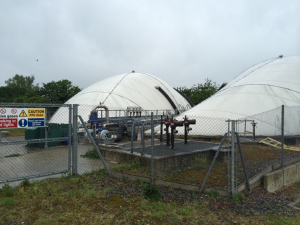CompEx, working in collaboration with Dehn, the lightning protection specialists, to give some further guidance with the below article for you on lightning as a source of ignition in hazardous areas.
If you examined the lightning protection system on your site or the system that you are proposing to have fitted, how would you know if it complied to the appropriate standards?
If the answer is that the specialist contractor you engage to do the work would know, what qualification or competence do they have to evidence this?
If you contribute to managing ignition sources on site think about this, if your site requires a CompEx qualified and competent person to change a certified light fitting or a junction box, can that same qualified and competent person demonstrate the additional skills, knowledge and experience required to carry out an installation, inspection or test of a lightning protection system?
BS EN 1127 – Explosive Atmosphere – Prevention & Protection part 5.7 states that:
“Lightning will always lead to ignition, either from thermal rise, flash over, sparking, physical damage to structures or from induced energy leading to faults within localised LV distributions systems and equipment.”
DSEAR Regulations 2002 place a duty of care on site owners to manage, mitigate, remove or reduce any potential sources of ignition.
IEC 60079-14:2013 Electrical installations design, selection and erection, states that all potential sources of ignition must be risk assessed, removed or reduced. You must manage and mitigate risk.
It goes on to say that the method of managing the risk of ignition from lightning is to ensure that lightning protection is provided. That lightning protection is defined in BS EN 62305.
This is supported by the advice on the HSE website with its guidance notes on how best to apply DSEAR, COMAH, BS EN 60079-14 and BS EN 1127.
The protection measures against voltage disturbances detailed in Chapter 44 and Appendix 16 within BS 7671:2018+A2 (2022) IET Wiring Regulations 18th edition cover not only lightning, but other voltage disturbances caused by surges and the effects of electromagnetic interference (EMI) within an installation.

Public domain image showing the effects of a lightning strike to an anaerobic digester in the UK, with no effective lightning protection system installed.

The image above shows standard length Air Rods bolted to the support frame of a Pressure Release Valve. This places the strike point and a clamp well within the Hazardous Area Classified Zone, not acceptable under any standard.

The image above shows an Anaerobic Digestor gas bag full of Methane, we can see the signs showing that smoking and the use of mobiles is prohibited around the gas tank area. However, the lightning protection on these bags is a metal braid draped over the bag with a strike point well within the classified zone of the bag’s membrane. This again is a poor example of installation; isolated masts are the only viable protection type beyond the hazardous area.
DEHN Website links
https://www.dehn.co.uk/en-gb/white-papers
https://www.dehn.co.uk/en-gb/industry-solutions-and-applications
https://www.dehn.co.uk/en-gb/downloads#lightning-protection-guide
